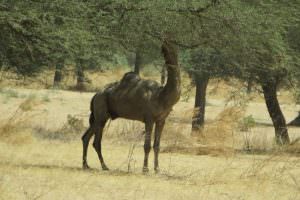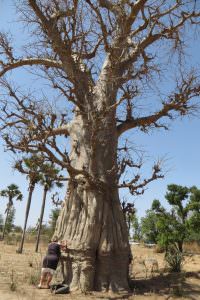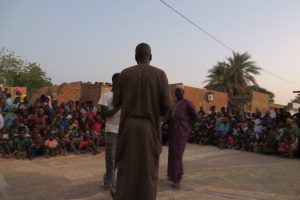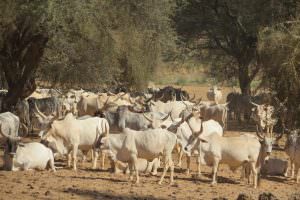Our twinship with Guedè Chantier in Senegal, Part 2
I hope that the story of our twinship between Damanhur and Guédé Chantier Eco-Comune in Senegal intrigued you. We found it precious to share a seminar about food conservation as a concrete action to solidify our sister community connection.
 The day after our arrival in Dakar, Pellicano – a Damanhurian woman, Ousmane Ali Pame – a Senegalese leader, and I left for our destination, Guédé Chantier. It took a long time before we got out of Dakar, which like all the big cities is surrounded by very extensive suburbs. Finally we were in the Senegalese savanna, characterized by much sand, some trees and shrubs that are resistant to the lack of water. It is funny to suddenly see groups of animals almost out of nowhere: many goats, cows and dromedaries who graze the leaves of the trees. The acacia trees are beautiful, and the most impressive are the huge baobab trees, which seem to raise their numerous arms to the sky, with almost no leaves. The baobabs are very old, sometimes hundreds of years, and we stopped a few times for Pellicano to orient these ancient trees.
The day after our arrival in Dakar, Pellicano – a Damanhurian woman, Ousmane Ali Pame – a Senegalese leader, and I left for our destination, Guédé Chantier. It took a long time before we got out of Dakar, which like all the big cities is surrounded by very extensive suburbs. Finally we were in the Senegalese savanna, characterized by much sand, some trees and shrubs that are resistant to the lack of water. It is funny to suddenly see groups of animals almost out of nowhere: many goats, cows and dromedaries who graze the leaves of the trees. The acacia trees are beautiful, and the most impressive are the huge baobab trees, which seem to raise their numerous arms to the sky, with almost no leaves. The baobabs are very old, sometimes hundreds of years, and we stopped a few times for Pellicano to orient these ancient trees.
 Every now and then we saw donkeys who were sometimes pulling wooden carts, and we passed through several picturesque villages. We were enchanted while Ousmane told us the story of all we were seeing. He is an inexhaustible source of information.
Every now and then we saw donkeys who were sometimes pulling wooden carts, and we passed through several picturesque villages. We were enchanted while Ousmane told us the story of all we were seeing. He is an inexhaustible source of information.
Finally we arrived in St. Louis, a very nice old colonial city, and we had lunch at Ousmane’s cousin’s home. His wife prepared us a delicious lunch in their beautiful house with cool air, while the outside temperatures rose gradually to over 30°C. Everywhere there were many children, and since the North Senegalese are very beautiful people, the children with their smiling eyes are simply most beautiful.
Immediately after lunch we left again because we were late, and it would still take several hours to get to Guédé. The landscape became more and more semi-desert and we finally arrived to Guedé, where there were about two hundred people waiting for us with a welcome ceremony while it was more than 38°C. After an introduction by Ousmane, the official speeches of the elders started. They spoke in Pulaar, which is the language of the Fulani people who live in the north of Senegal, Mauritania, Mali and Gambia.
 Ousmane translated into English, and I translated from English to Italian for Pellicano. A singer sang some beautiful songs in our honor. We were enchanted and moved by the intensity and ability to make significant speeches by all those who spoke. Some of the phrases really stood out to me, like “Now we are brothers and sisters,” and “Our house is your house,” as well as the profound meaning our sister community relationship seemed to have for them.
Ousmane translated into English, and I translated from English to Italian for Pellicano. A singer sang some beautiful songs in our honor. We were enchanted and moved by the intensity and ability to make significant speeches by all those who spoke. Some of the phrases really stood out to me, like “Now we are brothers and sisters,” and “Our house is your house,” as well as the profound meaning our sister community relationship seemed to have for them.
We also offered a speech bringing official greetings from Damanhur, and finally we retired in the simple but cozy house of Ousmane’s family. The house was shaped like a horseshoe with an inner courtyard, and since they have not yet lost the tradition of living together, about 30 people typically live in the house, and during the holidays, this number doubles. Each person has his or her own role, and the women take turns cooking. It almost seemed like being in a Damanhurian nucleo community.
After the communal dinner, Pellicano and I went to rest in our room, feeling really tired but vibrant with emotions, and we slept protected by a mosquito net. We woke up the next day ready to be active in reaching our objective, the food conservation workshop!








